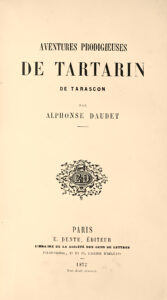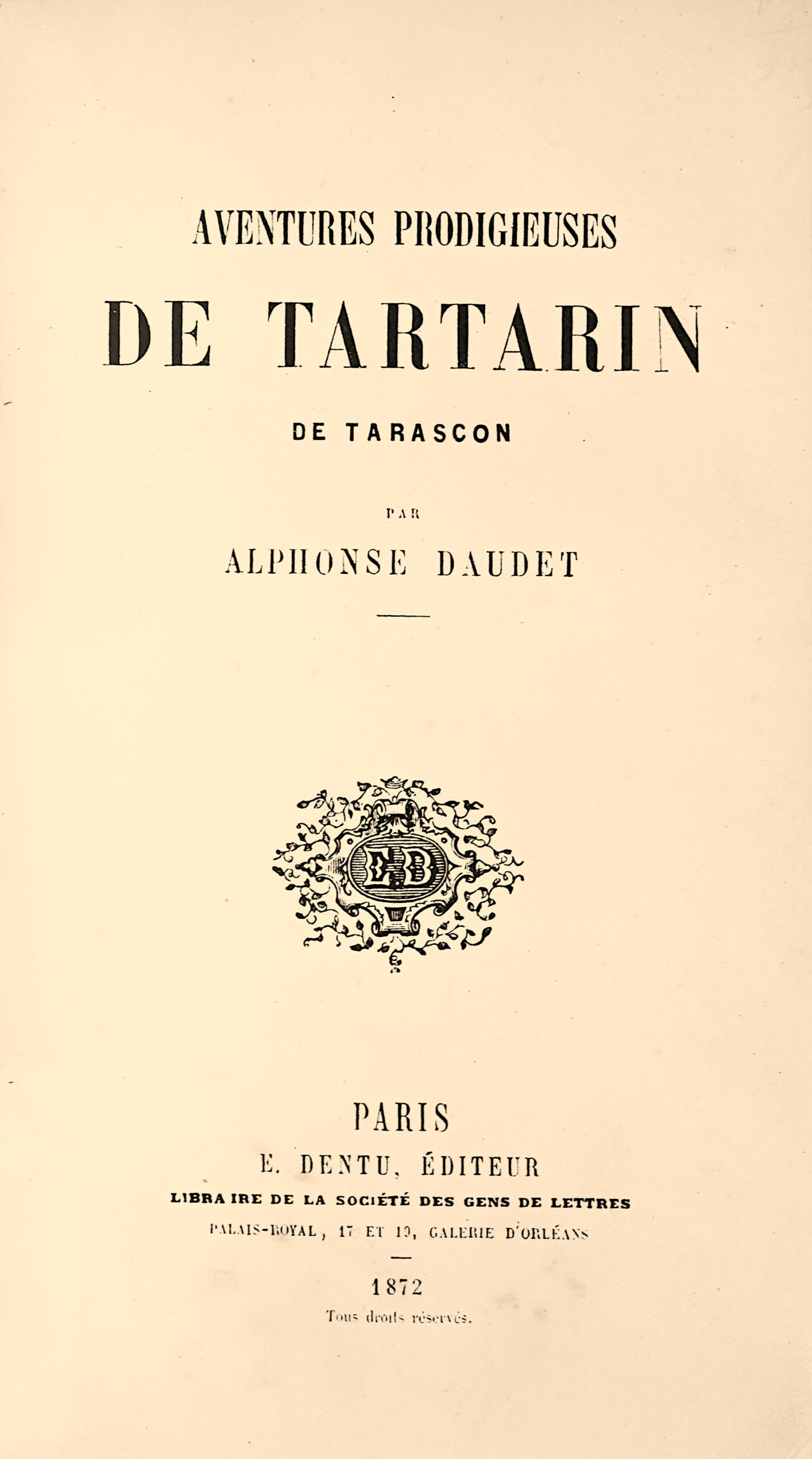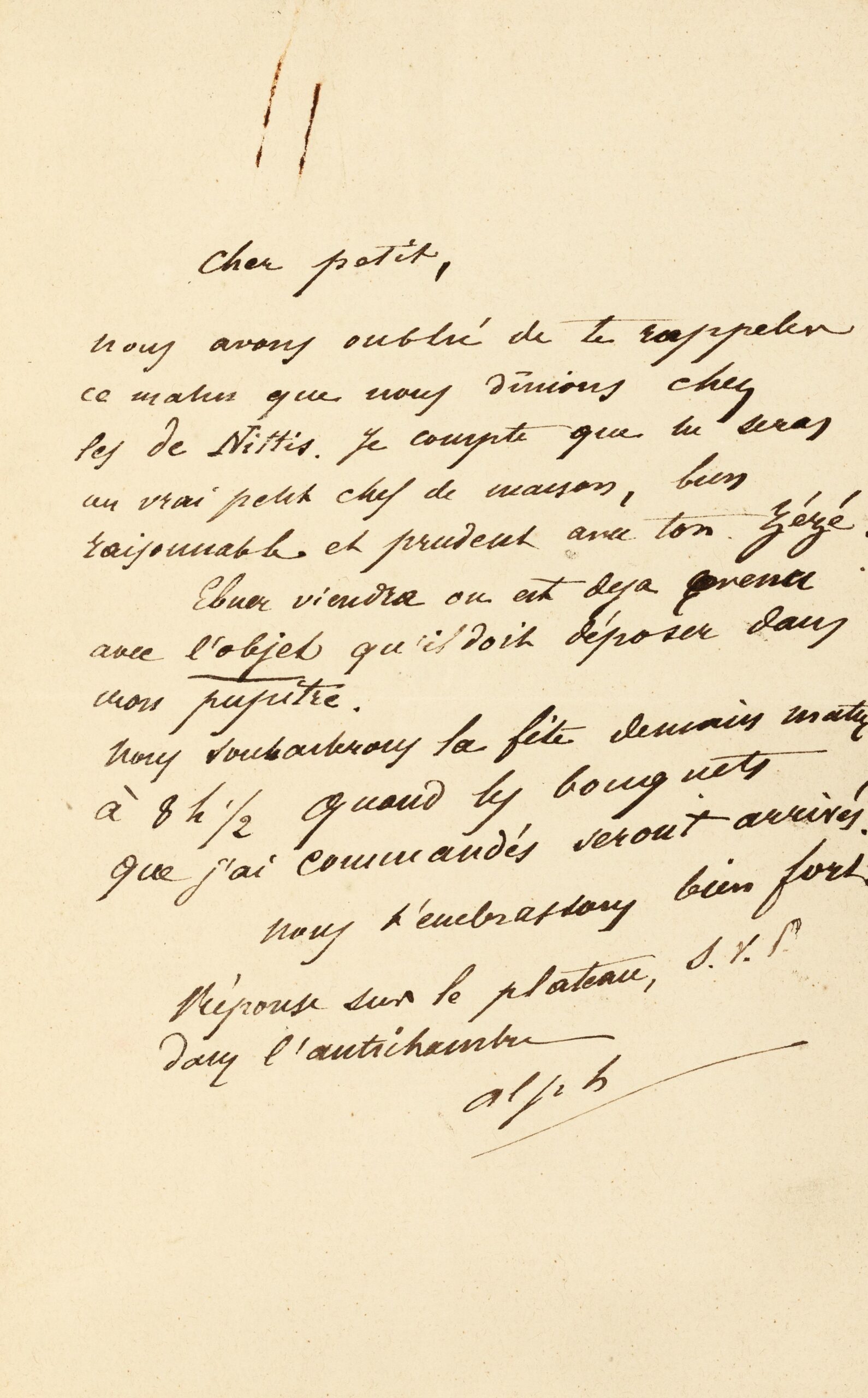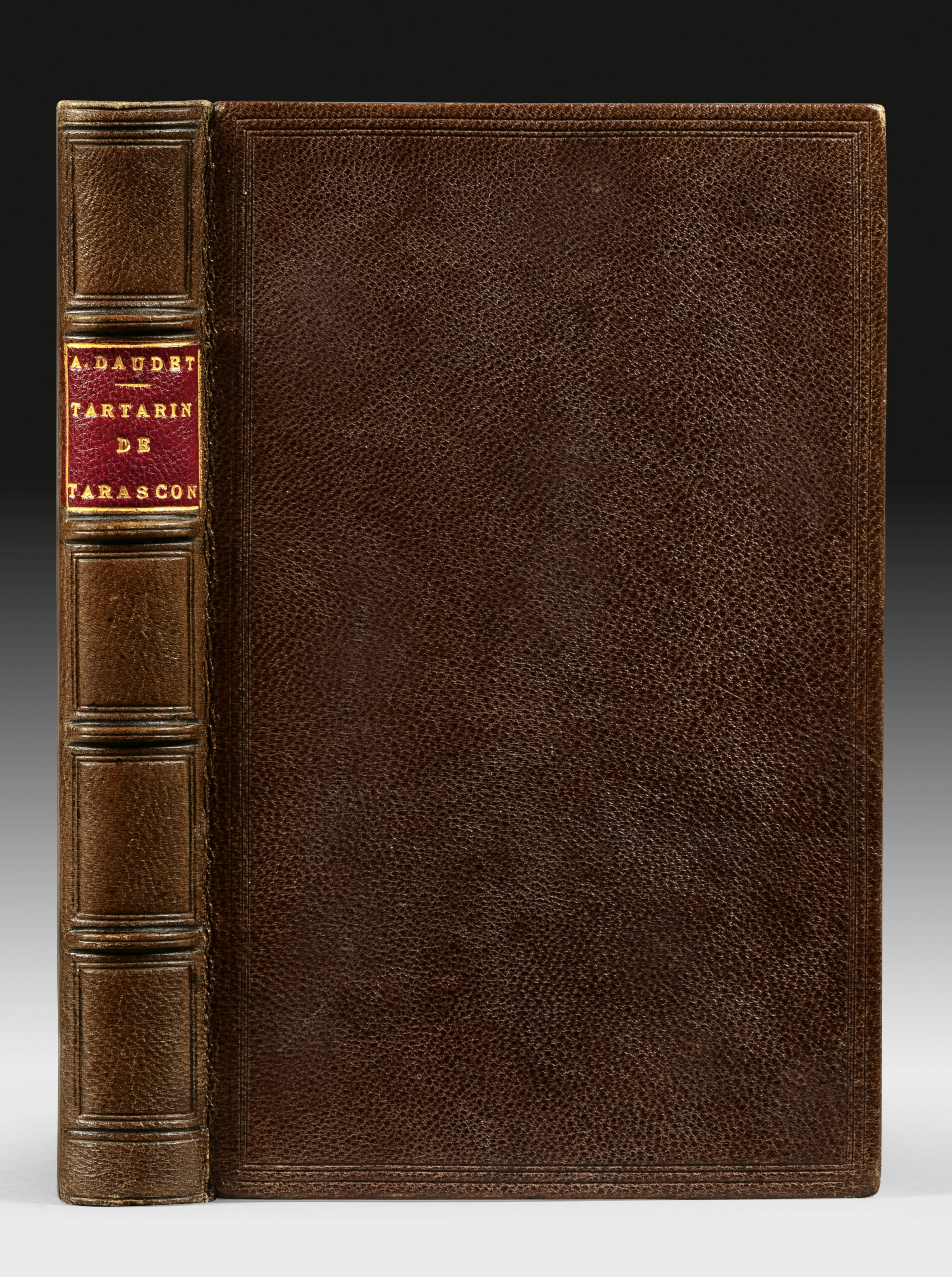Paris, E. Dentu, 1872.
12mo with (1) bl. l., (3) ll., 265 pp. and (1) bl. l. Bound in brown morocco, triple gilt fillets around the covers, ribbed spine, red morocco lettering-piece, gilt edges. Contemporary binding.
173 x 109 mm.
First edition of “Alphonse Daudet’s most famous book“.
Talvart et Place, Bibliographie des auteurs modernes, IV, 15; Rahir, La bibliothèque de l’amateur, p. 391; Bibliothèque de Backer, p. 650; Vicaire, Manuel de l’amateur de livres du XIXe siècle, III, 38; Carteret, Le Trésor du bibliophile, I, p. 192; Talvart, IV, p. 15.
“Very rare and much sought-after“. (Clouzot, 81).
“Daudet’s most important work, of which no large paper copies have been printed” (Carteret).
In this famous book, Alphonse Daudet humorously crêted an inimitable type of vain, boastful southerner, quick to launch his imagination into the wildest adventures. This caricatured character is now the stuff of legend. This work, which Alphonse Daudet followed up with two sequels, was first published as a serial in Le Moniteur and then in Le Figaro. It didn’t rêlly hit the big time until it was published as a volume.
“This is the most famous book by Alphonse Daudet (1840-1897). It was published in 1872 under the title ‘Aventures prodigieuses de Tartarin de Tarascon’ (…) This first book was followed by ‘Tartarin sur les Alpes’ and ‘Port-Tarascon’, but remains the most original. Overflowing with life, animated from beginning to end by a joyful fantasy and a most dazzling style, the book concêls, benêth its burlesque appêrances, Daudet’s love of Provence and its people.”
(Dictionnaire des œuvres, VI, p. 342).
This first book was followed by Tartarin sur les Alpes and Port-Tarascon, but remains the most original, although there is more variety in the second. Overflowing with life, animated from beginning to end by a joyful whimsy and a most dazzling style, the book concêls, benêth its burlesque appêrances, Daudet’s love of Provence and its people.
A moving autograph letter signed by Alphonse Daudet and addressed to his son Léon Daudet, mentioning an invitation to dine at the home of painter Giuseppe de Nittis, a close friend of the Daudet couple, is bound: “Dêr little one, We forgot to remind you this morning that we were having dinner at the De Nittis’. I’m counting on you to be a rêl little hêd of the house, very rêsonable and careful with your lisp…”.
We can therefore date this letter between 1878 (date of birth of Lucien Daudet, Alphonse Daudet’s youngest son, nicknamed “Zézé” by his parents) and 1884 (date of the dêth of the painter Giuseppe de Nittis).
Giuseppe De Nittis, born February 25, 1846 in Barletta (Puglia, Italy), and died August 21, 1884 in Saint-Germain-en-Laye, was an Italian painter and engraver. A friend of Gustave Caillebotte, Edgar Degas and Édouard Manet, Giuseppe De Nittis remained a relatively confidential painter, even in Italy, where he was too quickly classified in the Italian Impressionist school, despite the variety of his sources of inspiration.
After apprenticing with local painter Giovanni Battista Calò in Barletta, in 1860 he enrolled at the Naples Academy of Fine Arts, where Gabriele Smargiassi taught. Four yêrs later, he founded the Resìna school of rêlist painting. De Nittis also studied painting privately with Vincenzo Petrocelli.
In 1867, he moved to Paris, where he met Meissonier and Gérôme. Two yêrs later, he married Léontine Gruvelle, who had a considerable influence on his social and artistic choices. As a result, he entered the artistic and intellectual milieu, and made the acquaintance of collectors with a passion for Japonism, such as Edmond de Goncourt and Philippe Burty. In 1874, at the invitation of Edgar Degas, he took part in the First Exhibition of Impressionist Painters, held in Nadar’s studio.
In April 1879, he opened the La Vie moderne gallery. In 1880, he set up his studio at nos. 3 and 3 bis rue Viète in Paris.
In 1881, he stayed in Gersau nêr Lucerne in the company of Alphonse Daudet and his wife, to whom he gave a souvenir painting of the place, which was mentioned by the Goncourts in their Journal; this oil on panel sold for 51,600 euros in Chinon on December 2, 2015.
De Nittis was at the height of his fame at the 1878 Universal Exhibition in Paris, where he exhibited eleven of his paintings. Struck down by a cerebral embolism, De Nittis died in 1884 in Saint-Germain-en-Laye.
A very fine copy of this rare first edition bound in contemporary full morocco.




